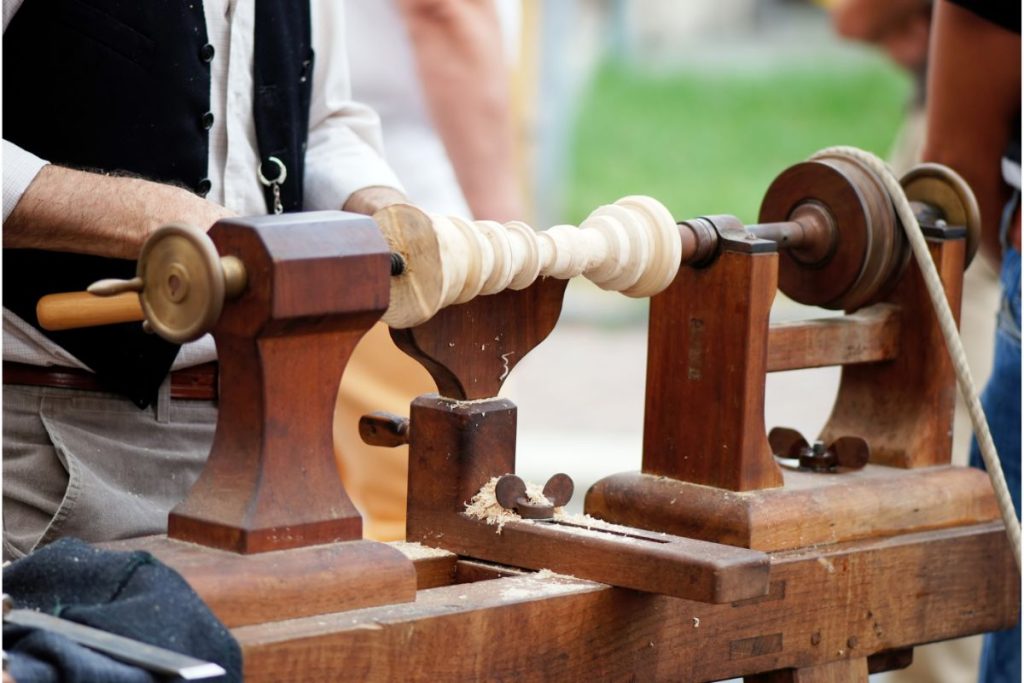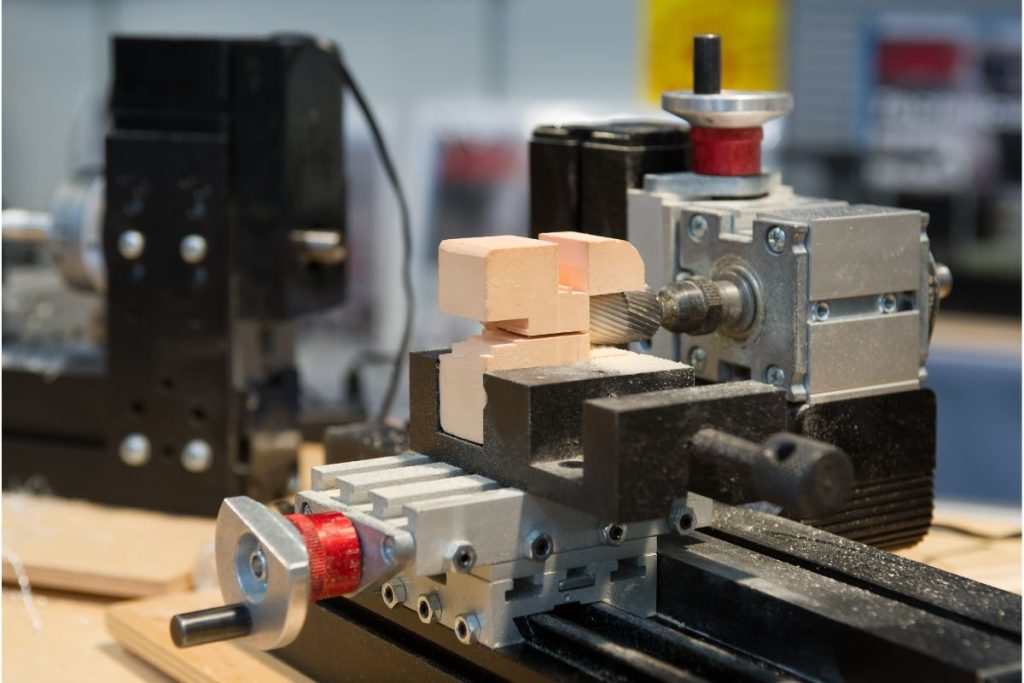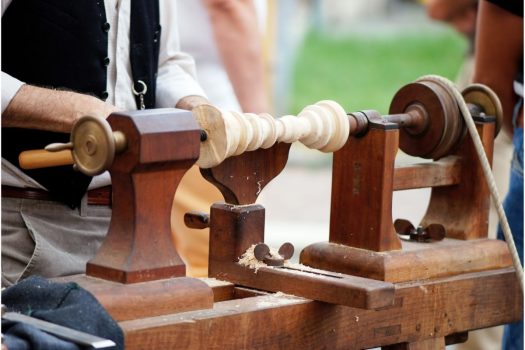Contents
A wood lathe can help you to take your wood art skills to a whole new level. There are things that you can create with a lathe that just aren’t possible with other types of woodwork tools.

Although it may feel a little overwhelming to use a lathe, especially if you have worked exclusively with manual tools previously, it can be fun to try and learn a new skill.
Despite any apprehension that you may have surrounding using a wood lathe, this can be dissipated by learning about the lathe and how to use it properly.
In this article, we will look at the main components of a wood lathe and how to safely and properly use a wood lathe.
Main Components Of A Wood Lathe
The first thing that should be understood when you are looking to use a wood lathe for the first time is all of the components that make up the lathe.
Knowing the main components can help you gain a deeper understanding of the machine and help ease some of the concerns that you may have.
Motor
The main component that makes the lathe turn, is obviously the motor. Modern lathes are powered by electricity and plug into a regular socket point. Without a source of power, your lathe will not work.
There are different sizes of lathe that are available on the market and with the different sizes come different sized motors. On average, however, most lathe motors range between 0.75 and 2HP.
Headstock And Tailstock
The headstock houses the conversion of power that stems from the motor to the spindle. The spindle is the part that provides motion to the piece that you are working on, causing it to rotate.
Depending on the make and model of the lathe that you are using, the motor will either be found inside or beneath the headstock area.
In addition to the headstock, wood lathes have a tailstock. The tailstock will be located on the right side of the lathe, opposite the headstock. On your lathe, the tailstock can be repositioned depending on the size of your project.
The job of the tailstock is to keep the piece that you are working on in a central position on the lathe and to prevent it from moving out of position as you work on it.
Power And Speed Control
A wood lathe is a powerful tool that can be dangerous if it is misused, however, if you don’t use it to its full potential, you might not be able to get the results that you want to see. To get the most out of your lathe, you need to be able to use it at every available speed to create different effects.
The vast majority of wood lathes have multiple different speeds available to the user. The two most common ways to adjust the speed are via a foot pedal like a sewing machine, or by the pressure that you use on the piece of wood. A pedal-controlled lathe is best for beginners.
Tool-Rest
A tool-rest on a lathe provides both safety and convenience to the user. The tool-rest essentially provides a place to rest your tool as you make your cuts.
The main job of the rest is to keep your fingers protected from the rotating wood and to keep your tool as steady as possible to make your cuts neater. Most lathes will have adjustable rests that can accommodate different tools.
How To Use A Wood Lathe

Now that you understand the different components of the lathe and have a clearer idea of how the lathe works and how to keep yourself safe, it is time to learn the basics of how to use the lathe.
Setting Up
Because a lathe is a dangerous and powerful tool, it is important that you properly set it up before you jump into working on your piece.
The first thing you need to do is ensure that the lathe is switched off at the wall to help avoid any unsavory accidents. There are many statistics about lathe accidents and you do not want to become one.
With the lathe completely switched off, you should position your piece of wood on the lathe, using the headstock and tailstock to keep it in place.
You should also organize the tools that you will be using for this piece. It is more convenient to have all the tools that you want to use laid out next to you so that you can easily reach them without getting up.
You should also take this time to position the tool rest at the right height for the piece you are working on.
When selecting the tools that you will use, make sure that they are in good condition and are sharp enough to cut the wood easily. A dull blade can cause parts of your piece to come flying off the lathe.
Using The Lathe
When you are ready to begin using the lathe, it is important to ensure that you are positioning your tool at a 90-degree angle to get the best results.
Perform a final check of the piece you are working on and the tailstock to ensure that they are secured in place, and then you are good to go.
If you are using a lathe that is speed controlled with a pedal, you should turn it on and begin on the lowest speed if it is your first time.
This will get you used to the motion. When you are more comfortable, the speed of the lathe should match the wood you are working with.
When you place your tool against the wood, you will feel some resistance, do not be put off by this as this is what makes cuts.
Chances are the first piece that you make on the lathe will just be practice cuts rather than a masterpiece. You should practice with all the different tool bits to see what each tool can achieve.
Final Thoughts
Using a wood lathe may seem daunting at first but once you have practiced a bit with all the different tools and different types of wood, you will be able to make masterpieces in no time at all.







